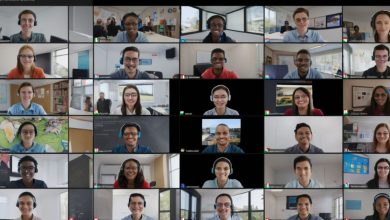Language Immersion Programs for Rapid Fluency Gains
Learning a new language can be a rewarding yet frustrating journey, especially when fluency feels like a distant goal. Traditional classroom methods often fall short when it comes to real-world usage. That’s where language immersion programs stand out — by surrounding learners with the language, culture, and context needed for natural acquisition. In this guide, you’ll discover how immersion accelerates fluency, what types of programs exist, how to choose the right one, and how to make the most of your experience.
What Are Language Immersion Programs?
Language immersion programs are structured learning experiences where participants are fully surrounded by a target language in everyday life. These programs go beyond textbook learning by encouraging constant interaction with native speakers in real situations.
Key characteristics include:
-
Total or near-total exposure to the target language
-
Minimal use of the learner’s native language
-
Cultural integration through daily activities
-
A focus on practical communication over grammar drills
Unlike traditional courses, immersion allows learners to think and respond naturally, which promotes faster and more intuitive fluency development.
Why Immersion Works: The Science Behind Fluency Gains
Language immersion taps into how humans naturally acquire language — through context, repetition, and real-world use. When you’re consistently exposed to a language and required to use it to navigate daily life, your brain quickly adapts.
Benefits of immersion-based learning include:
-
Improved retention: You remember vocabulary better when it’s tied to real experiences.
-
Faster listening comprehension: Constant exposure trains your ear to recognize rhythm and intonation.
-
Accelerated speaking skills: Frequent conversations force you to think in the target language.
-
Cultural cues: You gain cultural context that deepens your understanding and helps avoid social mistakes.
This immersive environment minimizes passive learning and encourages immediate, meaningful practice — a key factor in rapid fluency development.
Types of Language Immersion Programs
In-Country Immersion Programs
These programs place you directly in a country where the target language is spoken. Activities may include:
-
Living with a host family
-
Enrolling in local schools or intensive language centers
-
Participating in community service, internships, or cultural exchanges
This format offers the deepest level of immersion and cultural exposure, often leading to the fastest fluency progress.
Domestic Full-Immersion Programs
For those unable to travel abroad, domestic options exist. These simulate immersion environments within your own country:
-
Language boot camps or intensive retreats
-
On-campus immersion dorms or language villages
-
Local institutes with “target language only” policies
While slightly less immersive than in-country options, they can still be highly effective when structured properly.
Virtual Immersion Options
Technology has made it possible to create immersive experiences from home:
-
Online courses with native speakers via video chat
-
Language exchange apps and conversation partners
-
Streaming media, podcasts, and interactive software
Virtual immersion is ideal for flexibility and ongoing exposure, especially when paired with real-world conversation practice.
| Program Type | Best For | Immersion Depth |
|---|---|---|
| In-Country | Full immersion, cultural growth | High |
| Domestic | Short-term or local learners | Medium |
| Virtual | Busy schedules, remote learners | Moderate |
Choosing the Right Program for Rapid Results
Identify Your Language Goals
Clarity around your objectives will help you choose the most effective format. Ask yourself:
-
Do I need conversational fluency for travel?
-
Am I preparing for a certification exam?
-
Is my goal academic, personal, or professional?
Defining your purpose ensures the program aligns with your desired outcomes.
Consider Duration and Intensity
Not all immersion programs are created equal. Some last a few weeks; others run for several months. Intensity matters:
-
Short-term programs (2–4 weeks): Best for initial exposure or travel prep
-
Long-term programs (3–12+ months): Ideal for fluency development
-
Daily study hours: More hours usually mean faster gains, especially if paired with social interaction
Match With Your Learning Style
Your personal preferences and comfort level also play a role:
-
Do you prefer structure or flexibility?
-
Would you thrive in a host family setting or an academic one?
-
Do you learn better through conversation, visuals, or hands-on activities?
Choosing a format that suits your style increases your engagement and effectiveness.
Realistic Timeline: How Fast Can You Become Fluent?
Fluency depends on several factors, including the language you’re learning, your current level, and how immersed you are. Still, many learners see significant results within weeks when fully immersed.
Here’s a general milestone breakdown for full-time immersion:
-
After 1 month: Basic conversations, greetings, survival phrases
-
After 3 months: Intermediate speaking ability, strong listening skills
-
After 6 months: Advanced conversation, comprehension of native speech in most contexts
Languages closely related to your native tongue (like Spanish or French for English speakers) usually take less time than more distant ones like Arabic or Japanese.
Success Tips to Maximize Your Immersion Experience
To get the most from your immersion program, take an active role in your learning:
-
Speak constantly: Even if you make mistakes, keep using the language.
-
Limit your native language: Avoid English subtitles, apps, or conversations.
-
Join local activities: Sports teams, hobby groups, and volunteer projects build natural conversation opportunities.
-
Keep a daily journal: Reflect on what you learned, what challenged you, and new phrases.
-
Use memory tools: Supplement with flashcards or spaced repetition apps to reinforce vocabulary.
The more intentional and engaged you are, the more fluency you’ll gain — and faster.
Common Pitfalls to Avoid
Even in immersive environments, it’s easy to fall into habits that slow progress. Watch out for these:
-
Relying on English too much: It’s tempting, but it undermines immersion.
-
Choosing the wrong program: A program that’s too easy or poorly structured won’t deliver results.
-
Staying in your comfort zone: Avoid socializing only with fellow learners.
-
Focusing too much on grammar: Fluency grows through communication, not perfection.
-
Not adjusting to culture shock: Embracing discomfort is part of the process.
Awareness of these issues will help you overcome them before they derail your learning.
FAQs About Language Immersion
How long do I need to stay in an immersion program to see results?
It depends on your goals and the language, but even 2–3 weeks of full immersion can yield noticeable improvements.
Can beginners join immersion programs?
Yes. Many programs are designed for total beginners and provide scaffolding for early success.
Are immersion programs suitable for adults?
Absolutely. Adult learners often thrive in immersion because of their motivation and focus.
What if I get overwhelmed in a foreign environment?
Initial discomfort is normal. Most programs offer support systems to help you adapt gradually.
Conclusion: Is Language Immersion Right for You?
Language immersion is one of the fastest, most effective ways to achieve fluency. It challenges you to live the language rather than study it, and in doing so, it accelerates both confidence and competence. Whether you’re traveling abroad or creating immersion at home, the key is consistency, curiosity, and courage. If you’re serious about becoming fluent, now’s the time to take the leap — and immerse yourself in a new world.
Published on: 4 de June de 2025








